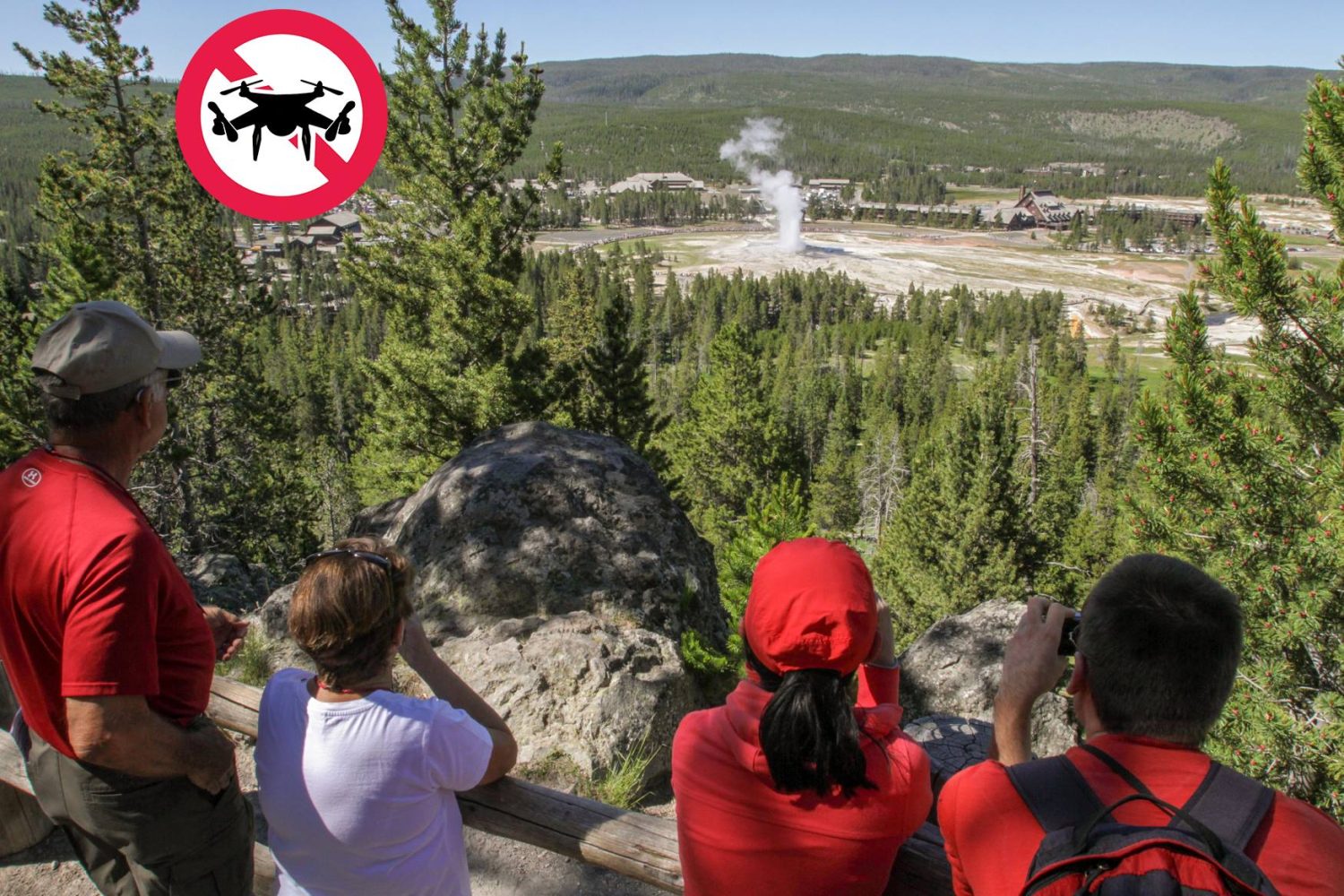
Winter is a great time to visit national parks. Many national parks in the US have recreation centers that support winter activities such as skiing, sledding, and snowshoeing or offer guided tours and classes. But if you’re thinking of taking that drone with you to admire the beauty of nature from a different vantage point, think again. Flying a drone may be prohibited at the park you are visiting.
Camera drones have become an extremely popular tool to photograph nature. And it’s not all that hard to imagine why someone visiting Yellowstone National Park would want to capture a picture of Old Faithful from above. But the best you can do in this scenario is to hike the Observation Point Trail because public use of drones is not allowed at the majority of sites managed by the National Park Service (NPS).
Read: Which DJI drones have Remote ID? Here’s the complete list
What are the rules for flying a drone at a US national park?
The NPS is a federal government agency within the US Department of the Interior that manages some 423 sites including national parks, most national monuments, and other natural, historical, and recreational properties. In June 2014, the agency issued a policy memo prohibiting the launching, landing, and operation of drones on the lands and waters that it administers.
This was done for several reasons. There were instances where recreational drone use had resulted in noise and nuisance complaints from park visitors. There were concerns for park visitor safety, and in one documented incident, park wildlife was found to have been harassed.
Jonathan Jarvis, who was the NPS director at the time, explained:
Small drones have crashed in geysers in Yellowstone National Park, attempted to land on the features of Mount Rushmore National Memorial, been lost over the edge of the Grand Canyon, and been stopped from flying in Prohibited Airspace over the Mall in Washington DC. …The likely increase in the use of these devices in units of the National Park System will undoubtedly impact park resources, staff, and visitors in ways that have yet to be identified.
But the NPS does allow some exceptions to this blanket ban on drones. A park’s superintendent, for instance, has the authority to permit drone use if they’re convinced it will not result in unacceptable impacts on park resources and values.
These special use permits typically involve a ton of paperwork and are given only to experienced operators for day operations within the visual line of sight. Your best bet would be to check with the park superintendent directly. But do know that obtaining a special use permit from the NPS would not exempt you from obtaining the appropriate authorization and permits from the Federal Aviation Agency (FAA) first since it has the primary jurisdiction over the National Airspace System.
Read: These are the two products DJI could release first in 2023
It’s worth mentioning here that the NPS’s authority to enforce a drone ban ends at its parks’ boundaries. Meaning, if you do not take off, land, or operate from NPS lands and waters, you are technically not breaking NPS rules. So, is there anything the national park can do in such a case?
Sure. Assuming you somehow manage to find private land near a park that gives you permission to launch the drone and you’re able to fly over NPS regions while keeping the drone in your line of sight, it still may not be a good idea.
The NPS holds the power to cite a user if their drone pursuits or harasses wildlife or creates an intentional disturbance of wildlife nesting, breeding, or other activities. The drone operator could also be cited for disorderly conduct if they knowingly or recklessly create a risk of public alarm or nuisance with their aircraft. Moreover, federal law prohibits operating a device powered by a portable motor or engine in a non-developed area without a prior permit.
In the end, it all boils down to park rangers enforcing the prohibition. They have the discretion to look at potential violations on a case-by-case basis, but you could face a maximum penalty of six months in jail and a $5,000 fine. And that is a risk that’s simply not worth taking.
Read: 2022 rewind: FPV drone videos that left us awestruck
Interestingly, though, US national parks themselves are not averse to drones. In many parks, drones are used for administrative purposes when appropriate and approved by the director of the region in which the park is located. These purposes typically include search and rescue operations, fire operations, scientific study, and aerial photography.
In Denali National Park and Preserve, for example, drones have been used to map streams affected by mining activities for restoration and trail project planning, to generate elevation models for monitoring volumetric changes of mass wasting sites, and to create 3D models of historic districts to assess land instability due to permafrost melt.
Read: Year in review: Everything DJI launched in 2022
FTC: We use income earning auto affiliate links. More.



Comments